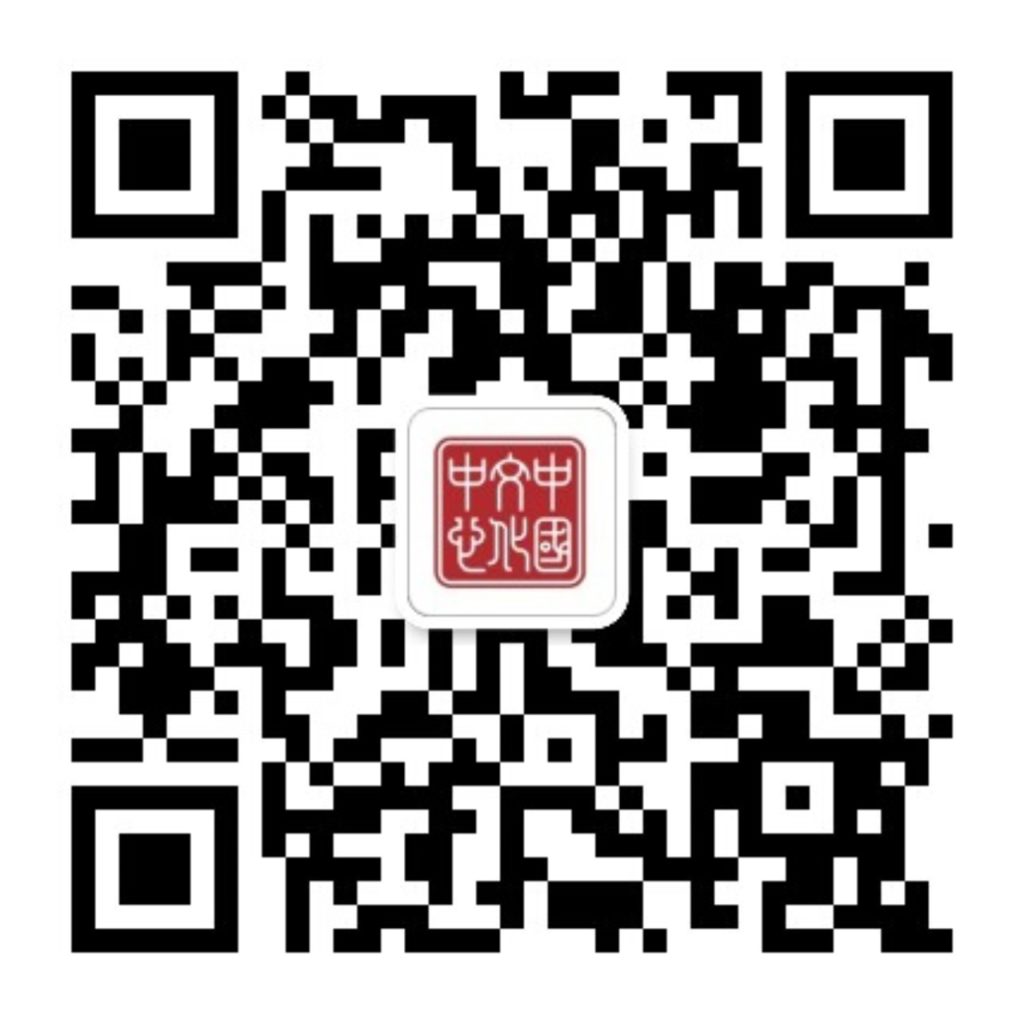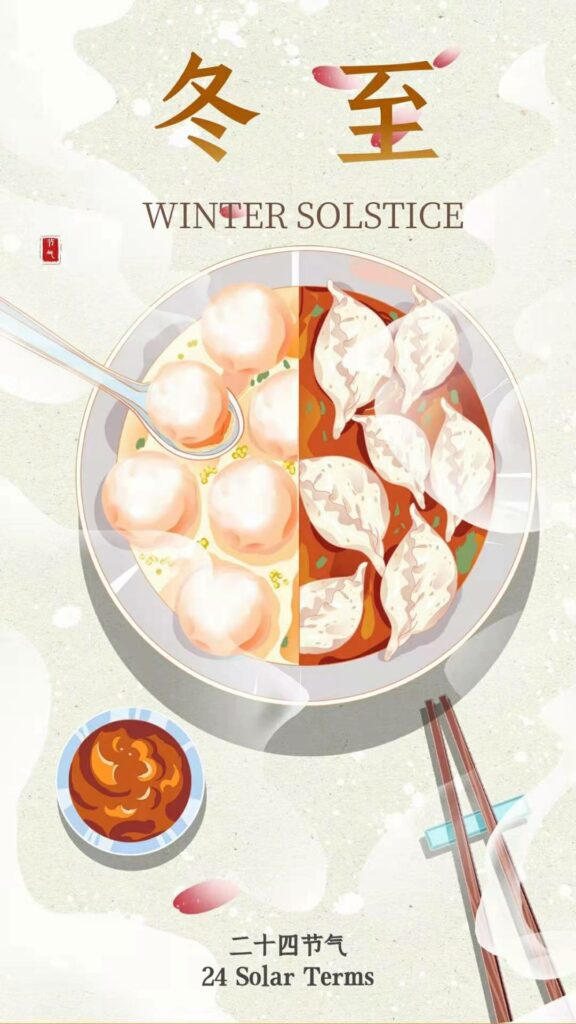
冬至,今年的12月21日,农历十一月初七,是北半球黑夜最长的一天,也意味着其后白昼渐长,新的循环又将开始。周、秦时期以冬至为岁首,即新年的开始。冬至不仅是二十四节气之一,更是中国重要的传统节日,至今民间仍有“冬至大如年”的说法;冬至前后,瑞典也在庆祝一系列最重要的传统节日,包括露西亚节(12月13日)和圣诞节(瑞典最重要的圣诞庆祝是在24日)等。星星灯和蜡烛灯在窗前闪着橙黄色暖光,为漫长冬夜抹上节日的色彩;从藏红花面包、姜饼、热葡萄酒,到圣诞火腿、腌鲱鱼、碱渍鱼、肉丸……一家人分享丰盛的圣诞自助大餐,共同走过疫情的阴霾。
Dongzhi (Winter Solstice) begins from December 21, or the seventh of the eleventh month of Chinese lunar calendar this year. It marks the longest night in the northern hemisphere, as well as the beginning of a new cycle as the day will be longer afterwards. In the Zhou and Qin dynasties, Dongzhi was the beginning of the new year. It is not only one of the 24 solar terms, but also an important traditional festival in China. Up to now, there is still the saying that “Winter Solstice is as significant as the Spring Festival”. Sweden also celebrates a series of important traditional festivals around Dongzhi, including St. Lucia’s Day (December 13) and Christmas (December 24, but in other parts of the Christian world the 25 is the most important). Advent stars appear in the windows of every Swedish family to illuminate the long winter nights and the festive season. From saffron bun, gingerbread biscuit, glögg, to Christmas ham, herring, lutfisk, meatballs…… Smörgåsbord of various traditional Christmas dishes is to be shared with families and to wish for the pandemic to be overcome soon.
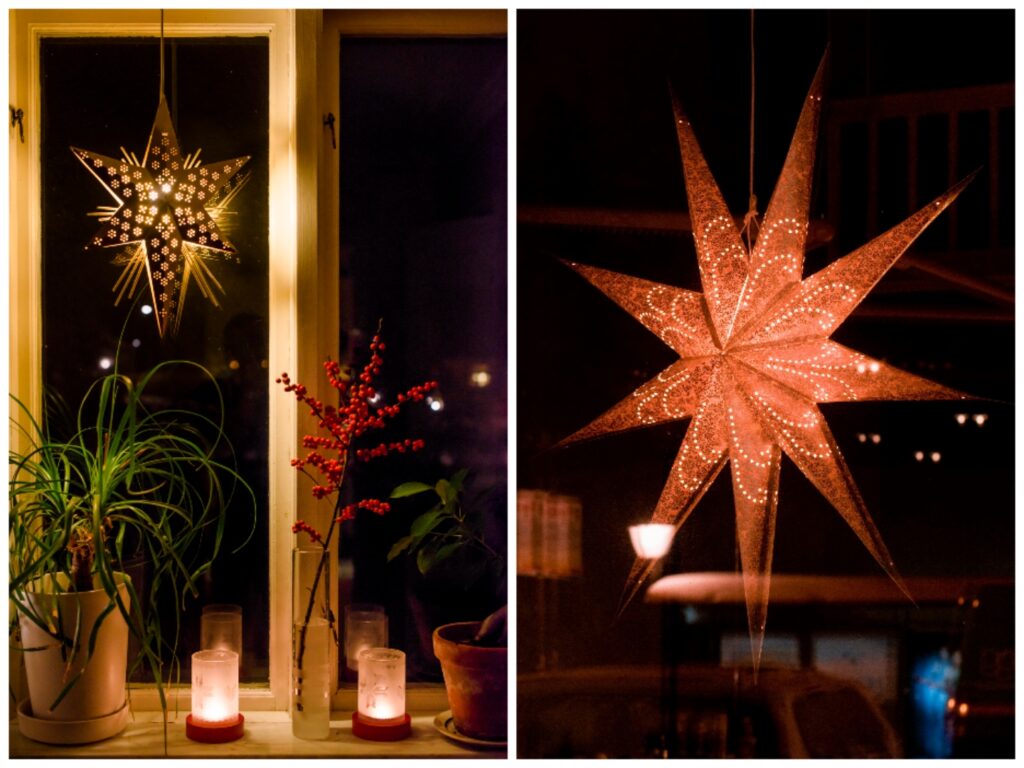
Advent Star / Simon Paulin | Helena Wahlman / imagebank.sweden.se
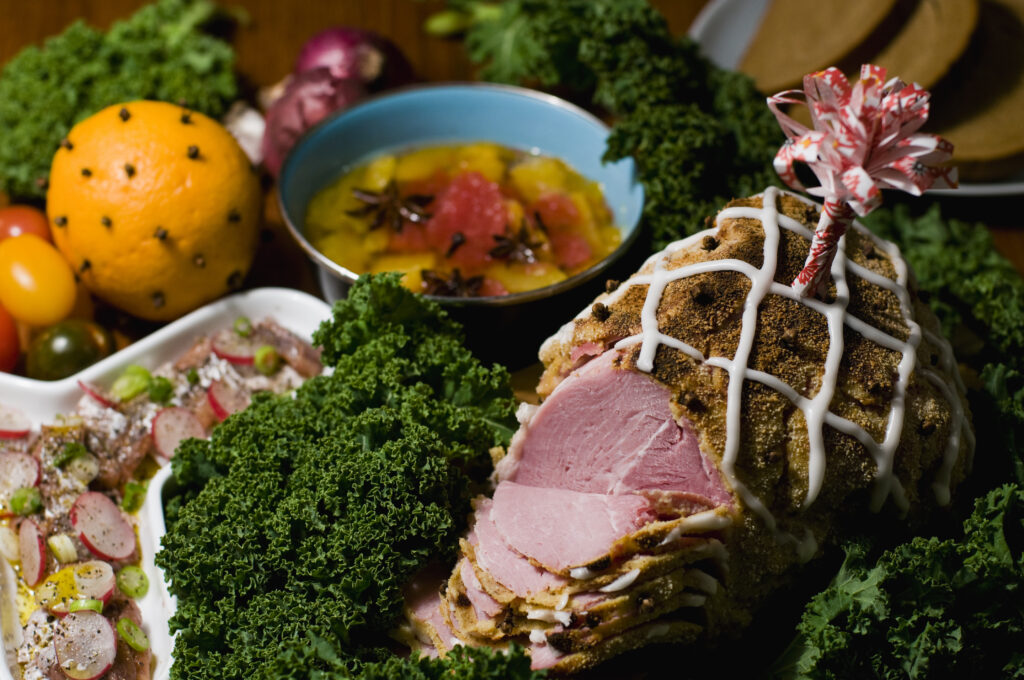
Julbord 圣诞自助大餐 Helena Wahlman / imagebank.sweden.se
《周礼》中有记载,“以冬至日,致天神人鬼”的祭祀仪式,以祈求消除疫疾,减少荒年、饥饿与死亡。汉代以冬至为“冬节”,要放假“贺冬”;唐宋时期内外官吏更可享受七天长假,皇上举行冬至祭天大典的仪式传至民间,演变为祭祖的习俗。如今,南方一些地区仍保留着冬至酬神祭祖的传统。
The Rites of Zhou recorded that “sacrificial ceremonies are held during Dongzhi to the heaven, the deities, the living and the dead” to wish for the elimination of epidemic diseases, less poor harvest, famine or death. In the Han dynasty, Dongzhi became a winter festival and a holiday to celebrate the winter. During the Tang and Song dynasties, officials could enjoy a seven-day holiday. The rituals of imperial heaven worship led to the emergence of the tradition to hold ancestor worshipping ceremonies among the people, which has been retained in some areas in South China till today.
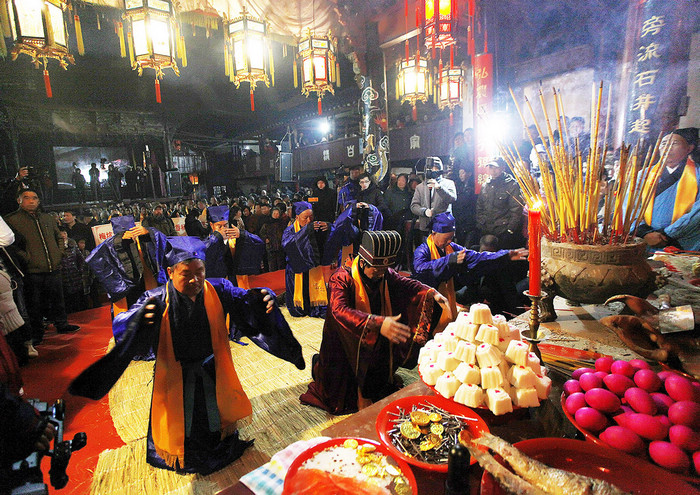
三门祭祖 Ancestor Worshipping Ceremony in Sanmen County / 三门县
古时中国从冬至后的第一个壬日开始“数九”,计算着冬去春来的脚步;后来演变为以冬至作为“数九”的起始。明代出现了“九九消寒图”的游戏。明末《帝京景物略》里记载:“冬至日人家画素梅一枝,为瓣八十有一,日染一瓣,瓣尽而九九出,则春深矣”。另一种常见的消寒图是以九画字联句,常选“亭前垂柳珍重待春風”九字,共八十一画。日填一画,“九九”之后,春回大地。
In ancient times, people measured the coming and going of the coldest days in the year by dividing the time into nine periods (with nine days each) from the first Ren (the ninth of the Heavenly Stems) day after Dongzhi. Later on, the beginning shifted to the very day of Dongzhi. In the Ming dynasty, a game was invented to pass the nine periods. One way is to draw a painting of nine nine-petal plum blossoms; or to write a work of calligraphy with nine nine-stroke words, one of the common choices meaning that “Be well, the willow in front of the pavilion, awaits the spring breeze.” Each petal or stroke is to be colored every day, and the spring arrives when all is complete.
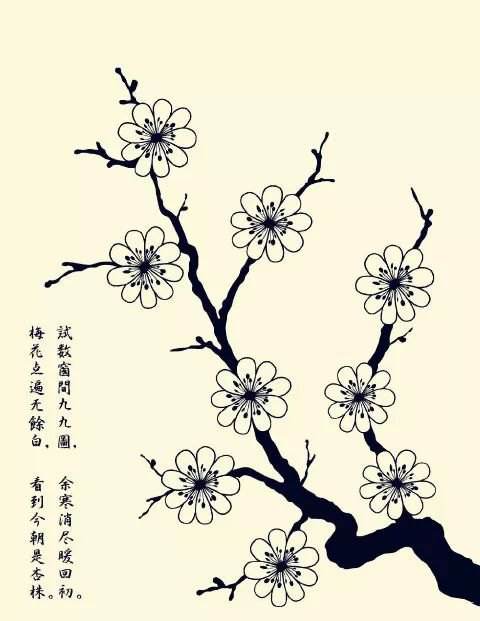
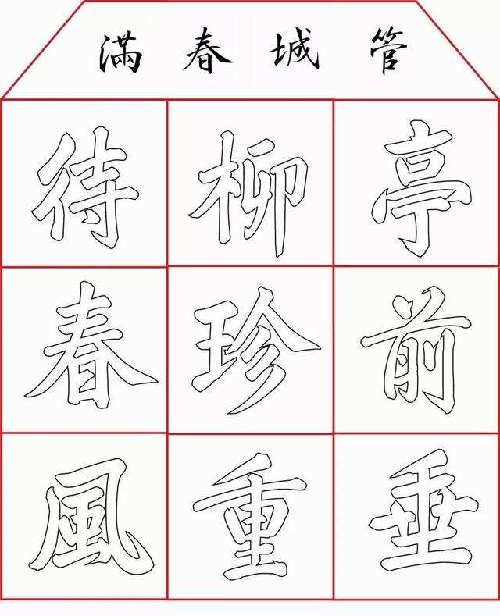
在中国南方,冬至要吃汤圆、赤豆粥/饭等,民间认为赤小豆可以驱避疫鬼、防灾祛病;北方则要吃饺子,相传是为了纪念用“娇耳”汤治好人们冻耳朵的医圣张仲景。
In southern China, people eat tangyuan (glutinous rice ball) and rice or porridge with red bean during Dongzhi, as it is believed that red beans can ward off evil spirits and prevent disasters and diseases; in the north, people eat dumplings, which is said to commemorate Zhang Zhongjing, one of the most eminent Chinese physicians who cured people’s frostbitten ears with dumpling soup.
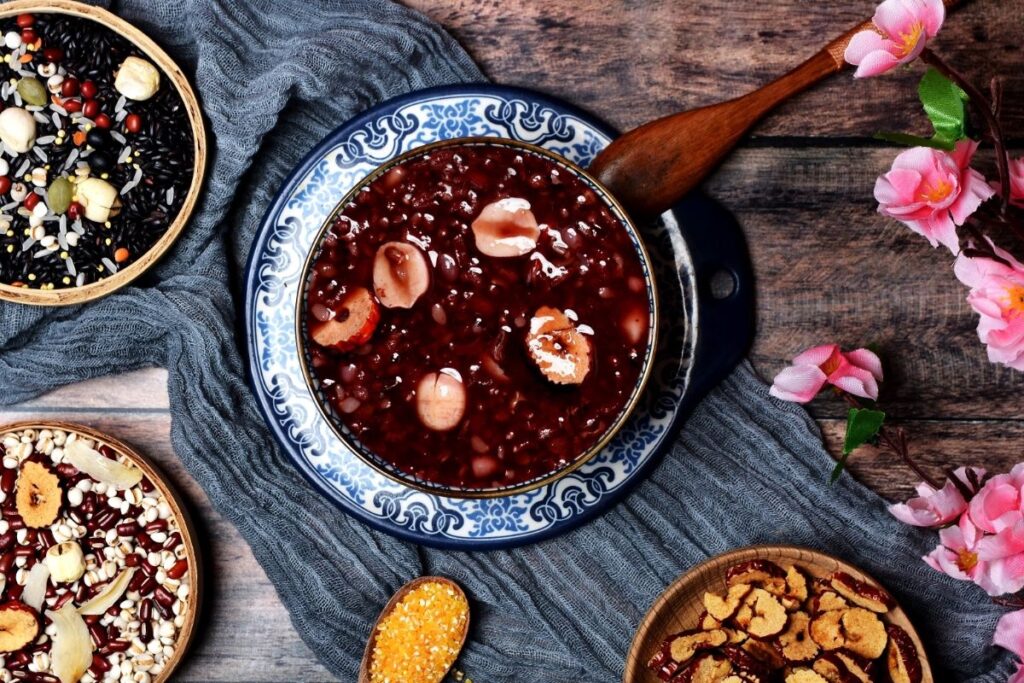
赤小豆粥 Red bean porridge
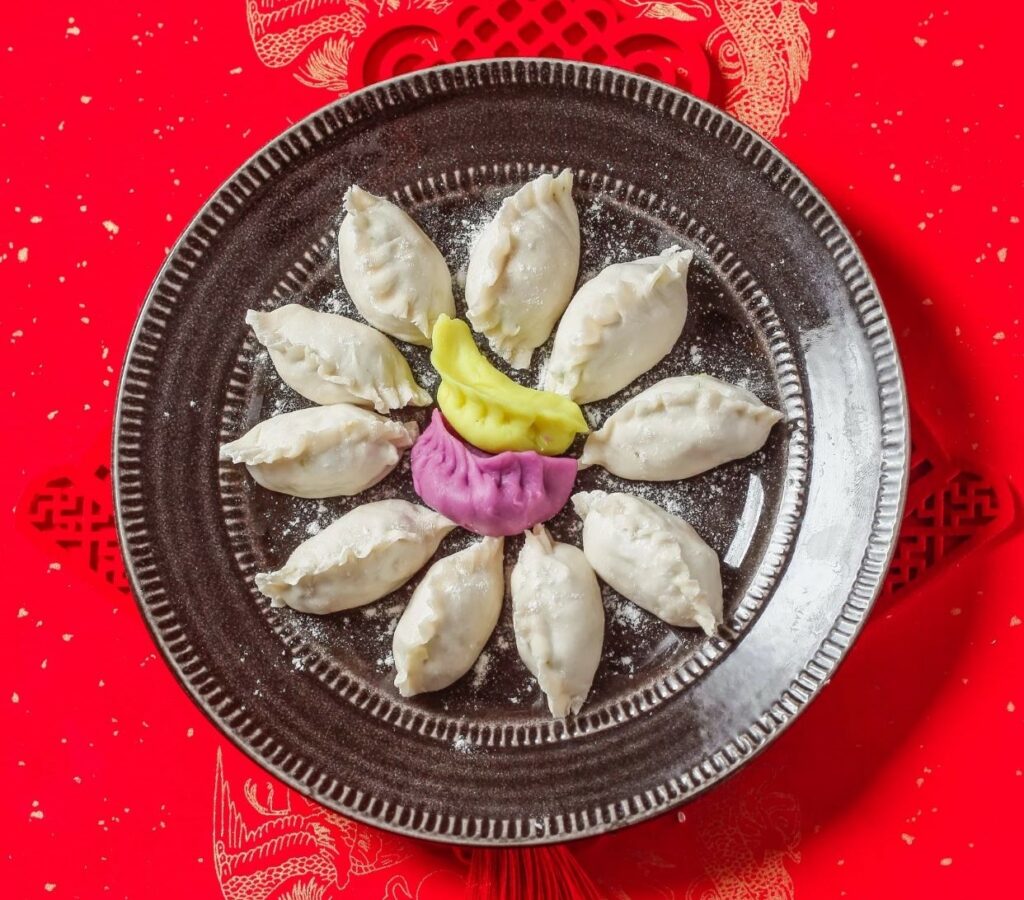
饺子 Dumplings
说到饺子,西安饺子宴必然榜上有名。从用料制法,到口味造型,可谓千姿百态各具特色。冬至,就要去西安品尝饺子宴,更品味古都长安的秦砖汉瓦在数千年岁月中沉淀的魅力。
Speaking of dumplings, the dumpling feast in Xi’an must be mentioned. From ingredient, cooking method to taste and shape, creativity and uniqueness can be seen everywhere. Dongzhi is the perfect time to go to Xi’an to enjoy dumpling feast and savour the charm of this ancient capital of Qin and Han dynasties.
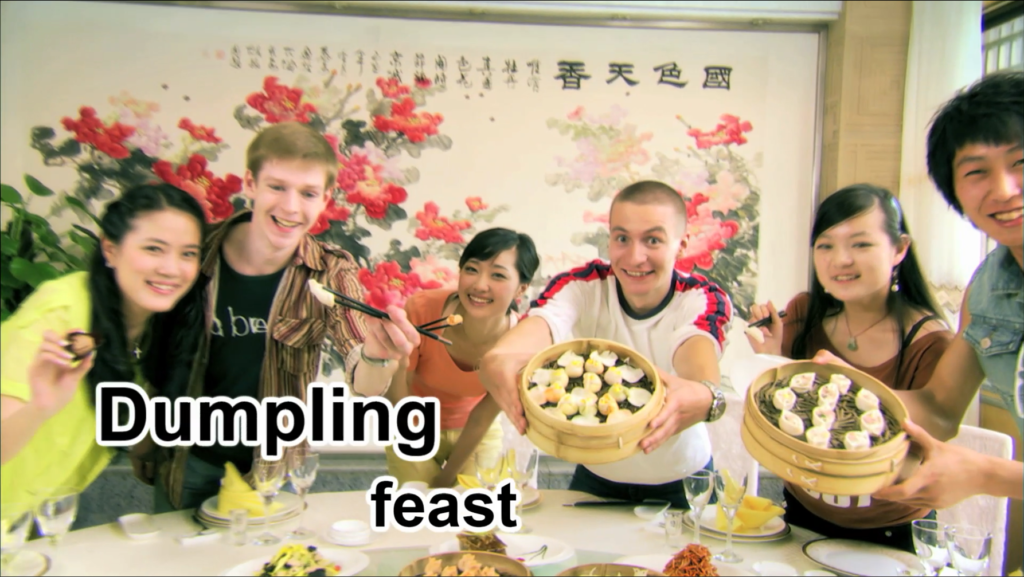
饺子宴 Dumpling Feast
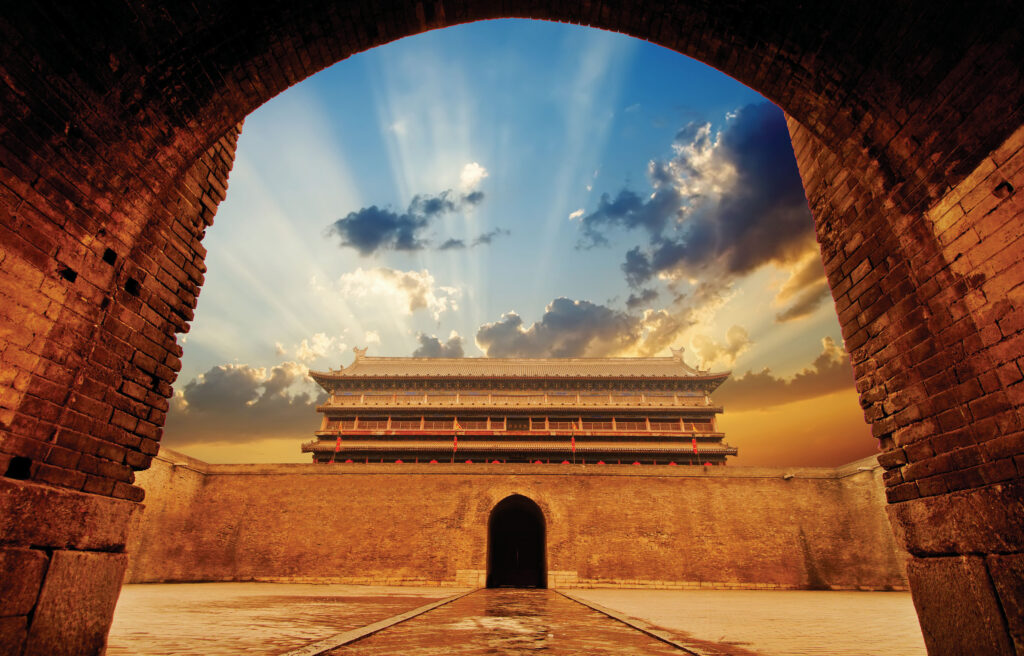
西安城墙东门 East Gate of Xi’an City Wall
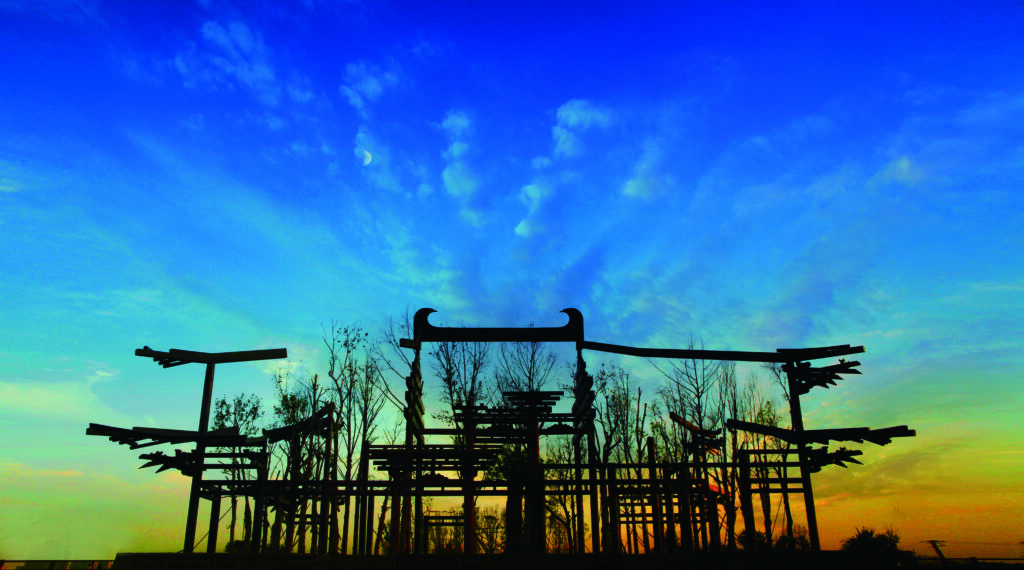
大明宫国家遗址公园 紫宸殿遗址 Zichen Hall site, Daming Palace National Heritage Park
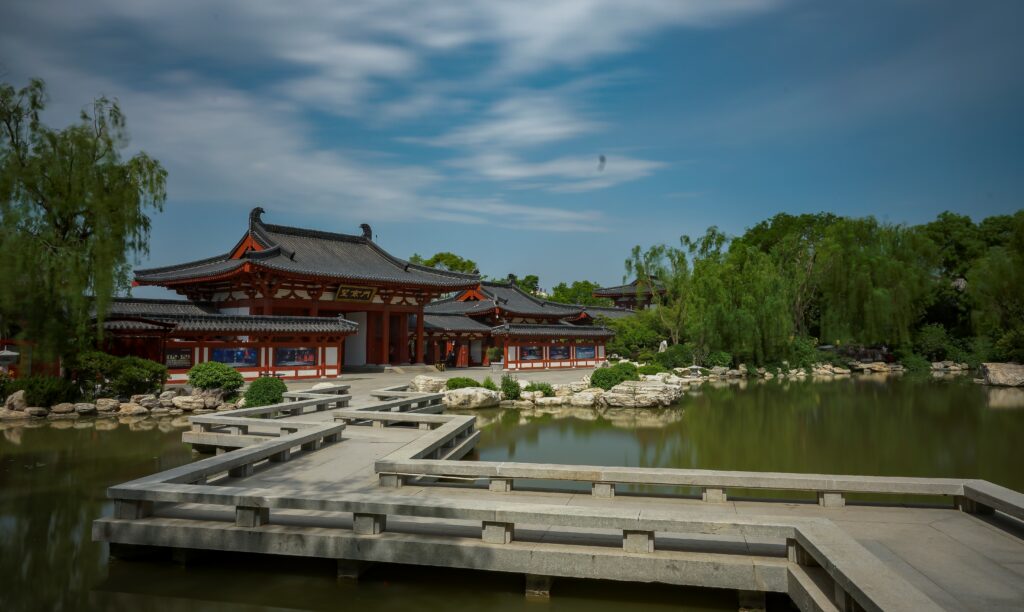
华清宫 芙蓉湖七曲桥 Huaqing Palace
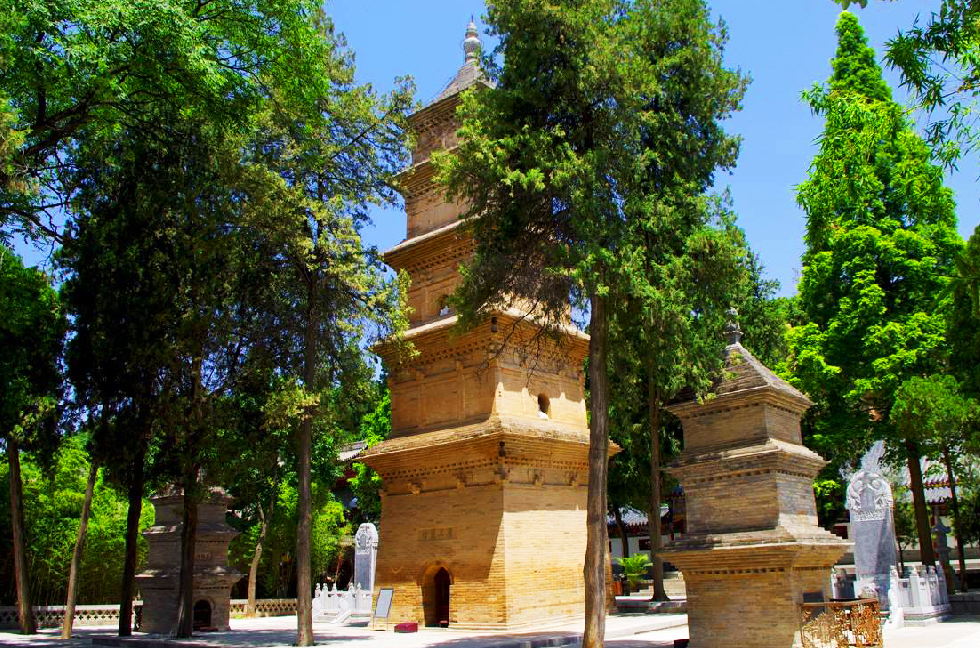
兴教寺塔 Xingjiao Temple Pagoda
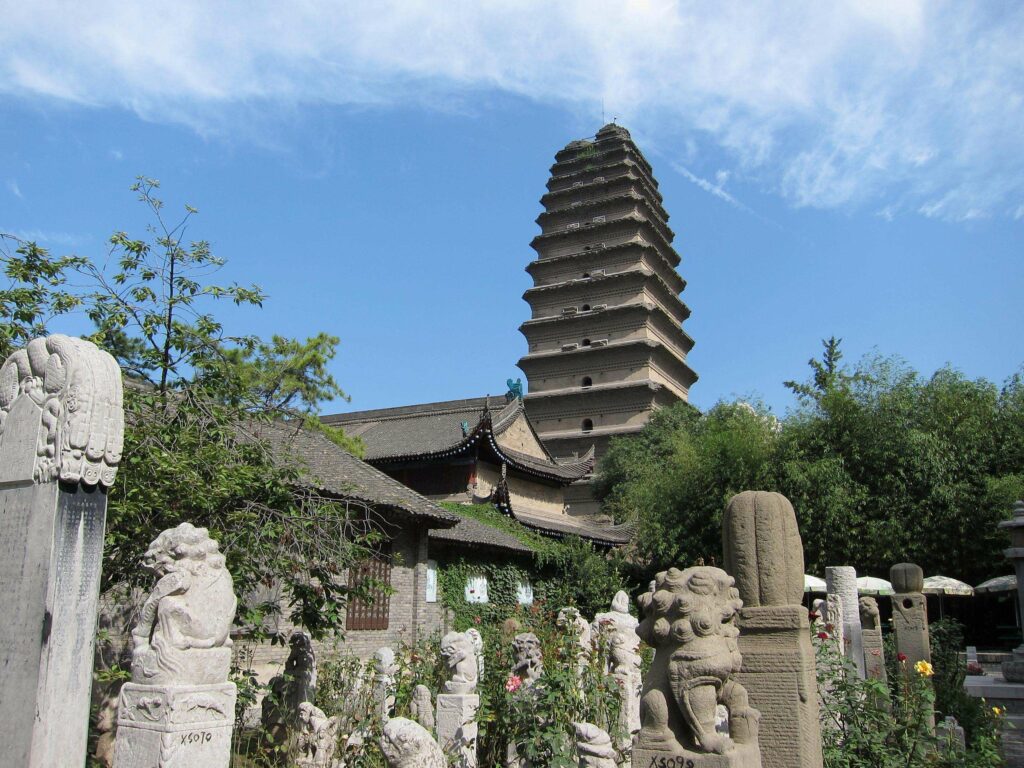
小雁塔 Xiaoyan (Small Wild Goose) Pagoda
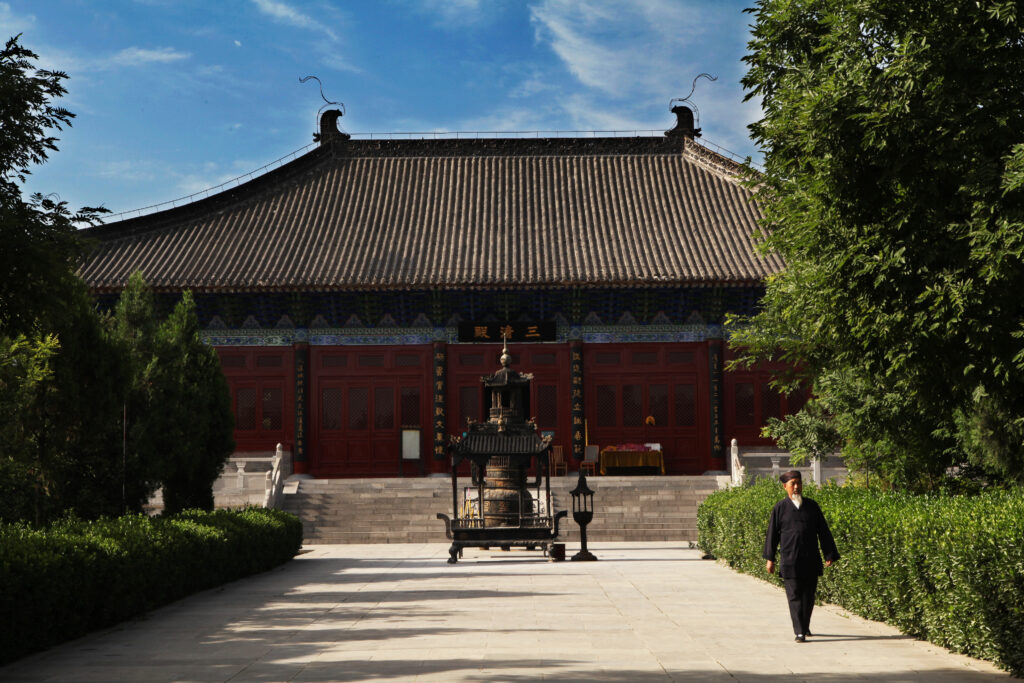
楼观台 Louguantai Taoist Temple
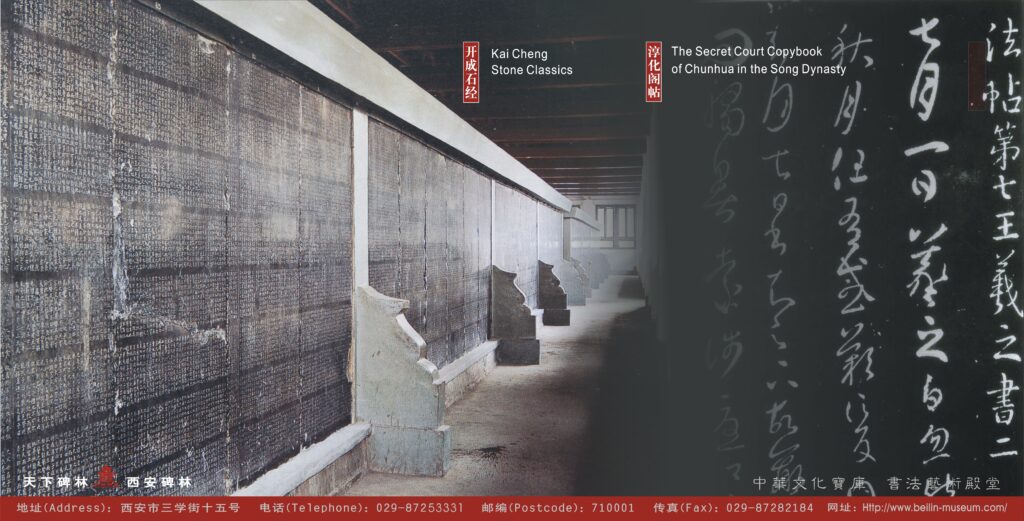
西安碑林博物馆 Xi’an Beilin Museum
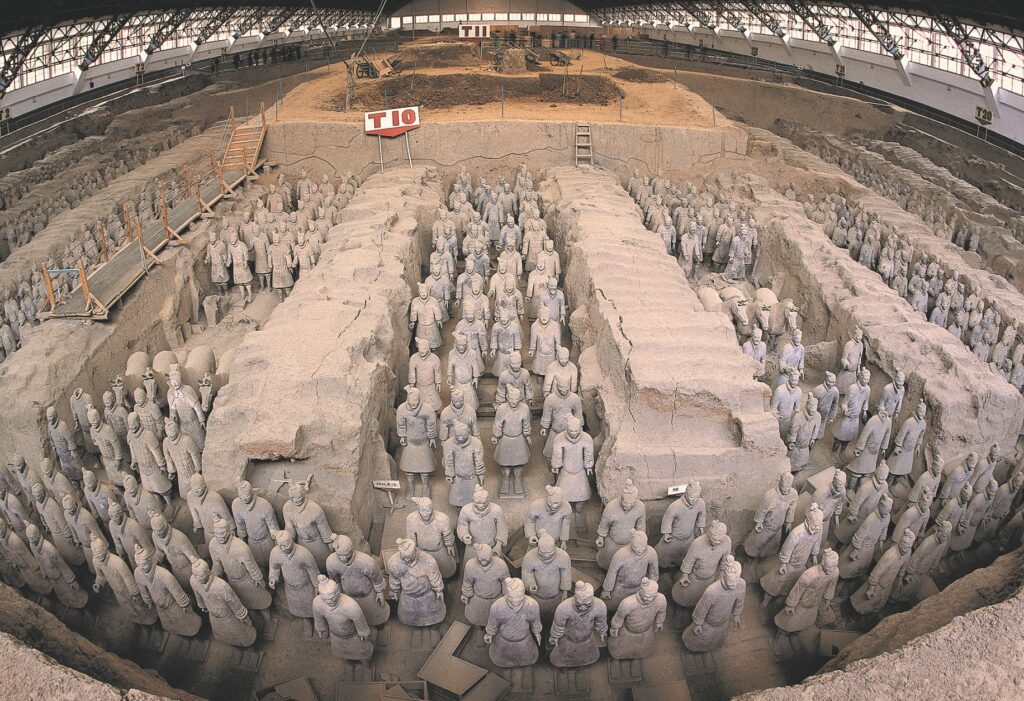
秦始皇地陵博物院 兵马俑 Terracotta Warriors, Emperor Qinshihuang’s Mausoleum Site Museum
资料来源 Sources:
http://www.ihchina.cn
陕西省文化和旅游厅
http://www.travelchina.org.cn/
Facebook: China Cultural Center in Stockholm
https://www.facebook.com/China-Cultural-Center-in-Stockholm-110983273921638
Instagram: chinaculturalcenterinstockholm
https://www.instagram.com/chinaculturalcenterinstockholm/
Tik Tok: cccinstockholm
@cccinstockholm
Wechat: 斯德哥尔摩中国文化中心 or scan the QR code below
